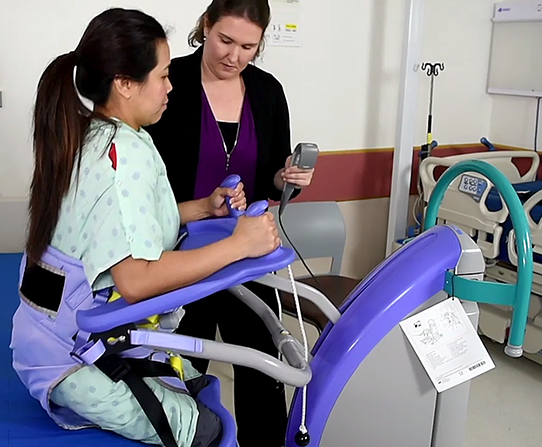When it comes to caring for individuals with limited mobility, having the right equipment is essential. One such piece of equipment that can greatly aid in safe patient handling is a Hoyer lift. Whether you are looking to rent or buy a Hoyer lift, there are important factors to consider to ensure that you are making the best decision for the patient as well as the caregiver. This article will provide essential tips for renting or buying a Hoyer lift for safe patient handling.
Understanding the Purpose of a Hoyer Lift
A renting a hoyer lift is a piece of equipment made to help caregivers move patients who have trouble moving about. It is especially useful for individuals who are unable to bear weight on their legs or who have difficulty moving from one surface to another. Hoyer lifts come in various types and configurations, including manual and electric models, sling style lifts, and stand-assist lifts.
Assessing the Patient’s Needs
Before renting or buying a Hoyer lift, it is crucial to assess the specific needs of the patient. Consider the patient’s weight, size, and mobility restrictions to determine the most suitable type of Hoyer lift. For example, a patient who can partially bear weight may benefit from a stand-assist lift, while a patient who is completely bedridden may require a full-body sling lift for transfers.
Consulting with Healthcare Professionals
It is recommended to consult with healthcare professionals, such as physical therapists or occupational therapists, before making a decision about renting or buying a Hoyer lift. These professionals can provide valuable insights and recommendations based on the patient’s condition and specific requirements. They can also offer guidance on proper transfer techniques and usage of the Hoyer lift to ensure the safety and comfort of the patient.
Choosing Between Renting and Buying
When deciding whether to rent or buy a Hoyer lift, consider factors such as the duration of use, budget constraints, and storage space. If the Hoyer lift is only needed for a short period of time or for temporary use, renting may be the more cost-effective option. On the other hand, if the Hoyer lift will be used on a long-term basis, buying may be the better investment in the long run.
Ensuring Proper Training and Education
Proper training and education are essential for both caregivers and patients when using a Hoyer lift. Make sure that caregivers receive thorough training on how to operate the Hoyer lift safely and effectively, including proper positioning of the patient, securing the sling, and maneuvering the lift. Patients should also be educated on how to cooperate during transfers to prevent accidents or injuries.
Checking for Safety Features
When renting or buying a Hoyer lift, it is important to check for safety features that can enhance the overall user experience and reduce the risk of accidents. Look for lifts with features such as emergency stop buttons, adjustable height settings, locking mechanisms, and padded slings for added comfort. Inspect the lift regularly for any signs of wear and tear, and ensure that it is in good working condition before each use.
Considering Portability and Storage
If portability and storage are important factors for you, consider opting for a Hoyer lift that is compact, lightweight, and easy to store when not in use. Some models are designed to be easily disassembled for transport or storage, making them ideal for use in different locations or for caregivers with limited space. Choose a Hoyer lift that fits your specific needs and lifestyle to ensure convenience and practicality.
Seeking Recommendations and Reviews
Before making a decision on which Hoyer lift to rent or buy, it can be helpful to seek recommendations and read reviews from other caregivers or healthcare professionals who have experience with using Hoyer lifts. They can provide valuable insights into the pros and cons of different models, brands, and features, helping you make an informed choice that meets your requirements and expectations.
Conclusion
In conclusion, renting or buying a Hoyer lift for safe patient handling requires careful consideration of the patient’s needs, consultation with healthcare professionals, proper training, checking for safety features, and assessing portability and storage options. By following the essential tips outlined in this article, caregivers can ensure that they choose the most suitable Hoyer lift to facilitate safe and comfortable transfers for individuals with limited mobility. Remember that the well-being and safety of the patient should always be the top priority when selecting a Hoyer lift.


